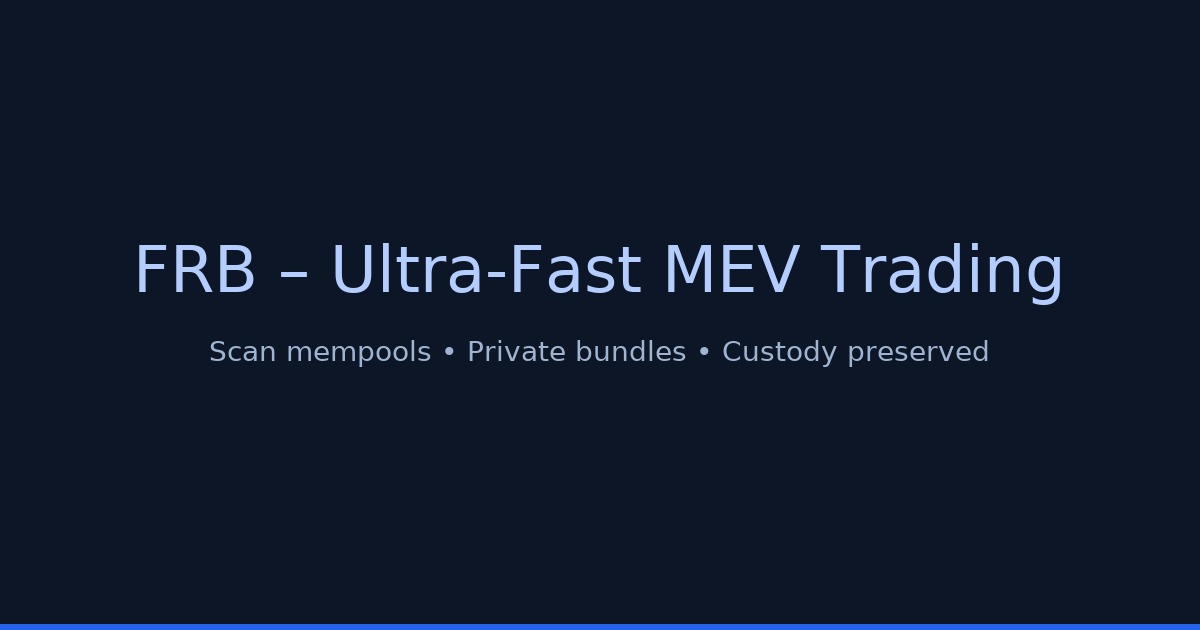Base MEV: Endpoints, Fees & Backrun Playbook
Base MEV guide: reliable WSS endpoints, fee considerations, and a policy‑safe backrun playbook using private bundles. Configure allowlists, liquidity checks, and strict gas/slippage caps for better inclusion.
Outcome
Ship a safer base route
Updated
11/2/2025
Next step
Launch dashboard & assign node

Overview
Reliable endpoints, fee awareness, and a conservative playbook are key to consistent Base MEV execution.
TL;DR
- Prefer low‑variance WSS close to your region.
- Use private bundles first; keep a safe public fallback with caps.
- Track inclusion percent; tune per route.
Quick checklist
- Router allowlists and token hygiene.
- Min liquidity threshold per pair.
- Slippage ≤ 0.5–1.0% and per‑trade gas/session budgets.
Next steps
Use the FRB agent to scan mempools and submit private bundles with custody preserved. → Try FRB, or read the Flashbots guide.
Step after reading
Launch FRB dashboard
Connect your wallet, pair the node client with a 6-character PIN, and assign the contract mentioned above.
Need the signed build?
Download & verify FRB
Grab the latest installer, compare SHA‑256 to Releases, then follow the Safe start checklist.
Check Releases & SHA‑256Related
Further reading & tools
Comments
The TL;DR makes it easy to share with teammates.
Could you compare relay options in more detail?
Latency figures would be nice to benchmark against.
Hope to see more examples on Polygon.
Adding a “pitfalls” section was a nice touch.
Clear and concise—thanks for the safety notes!
Any tips for tuning slippage caps on volatile pairs?
Would love a video walkthrough for setup.
Inclusion rate improved after moving to private bundles.
Backrun example clarified a lot for me.
I tried this with a canary size and it worked as expected.
Please cover bundle failure modes and retries.
Can you add guidance for BNB-specific routing?
Would love a follow-up on simulation best practices.
I set tighter caps and avoided a big loss—thanks!
Could you share recommended WSS providers?